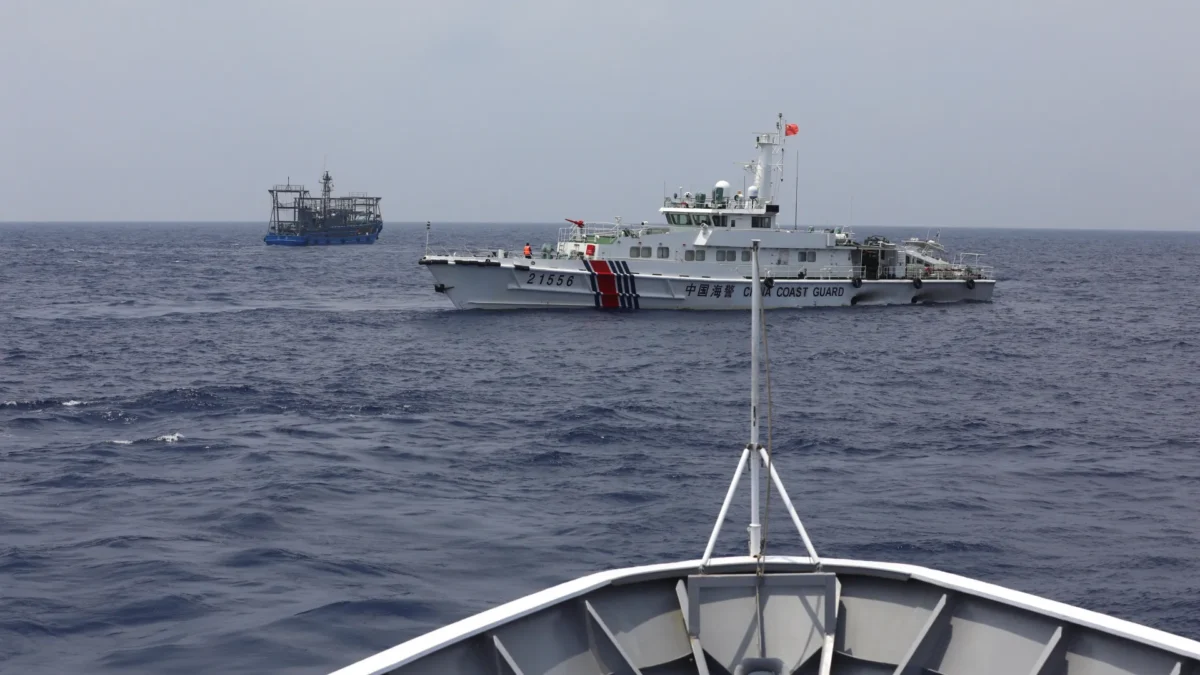Tensions flared again between the Philippines and China over disputed territory in the resource-rich South China Sea. On December 8th, Chinese coast guard ships fired high-powered water cannons at three Philippine government vessels attempting to deliver food and fuel to Filipino fishermen near Scarborough Shoal.
The attack damaged equipment on one of the Philippine Bureau of Fisheries and Aquatic Resources ships. It also deployed small boats and floating barriers to block access to the fishing grounds. The Philippines condemned China’s actions as illegal, dangerous provocation. The United States denounced the assault and reiterated support for allies in maintaining maritime rights.
Background of the Territorial Dispute
The Scarborough Shoal, also known as Bajo de Masinloc or Panatag Shoal, is a triangle-shaped chain of reefs and rocks surrounding a lagoon rich with fish stocks. It lies about 120 nautical miles west of the Philippine island of Luzon.
Both countries claim historic rights over the shoal, which falls within their respective 200-nautical-mile Exclusive Economic Zones (EEZs) as defined by the UN Convention on the Law of the Sea. Tensions have simmered for decades but escalated in 2012 when China effectively seized control of the shoal after a lengthy naval standoff.
China maintains a continuous coast guard presence to control access and expel other countries’ vessels. But Filipino fishermen continue trying to fish there due to proximity and necessity. Scarborough’s fish stocks help feed impoverished coastal communities.
The shoal also holds enormous strategic value due to its location – near critical global shipping lanes in the South China Sea. Control over Scarborough allows China to monitor naval movements and potentially project power farther east. There are fears China may one day reclaim land to build military bases, as it did in the Paracel and Spratly island chains.
China’s Incremental Aggression and “Gray Zone” Tactics
The December 8th water cannon attack represents China’s latest act of aggression in a calculated campaign to dominate the South China Sea.
Rather than overt military action, China employs so-called “gray zone” tactics toe the line between peace and outright armed conflict. These include swarming vessels to block access, ramming maneuvers, cable cutting, and bombarding crews with water cannons.
Experts see parallels to tactics Russia uses to needle and encroach without triggering war. The goal is to gradually establish de facto control and deter challenges through persistent coercion just below the level that would provoke wider conflict.
So far this year Chinese vessels have:
- Repeatedly fired water cannons near Philippine resupply missions to block access
- Deployed over 200 militia vessels in formation to intimidate rivals
- Used lasers to temporarily blind crewmen
- Rammed and sunk a Vietnam fishing boat
- Harassed Malaysian oil and gas operations
The US and allies refer to these as efforts to illegally assert maritime entitlements not aligned with international law. But China leverages its superior naval presence and slow, steady pressure.
Response from the Philippines and United States
Philippine President Ferdinand Marcos Jr. ordered increased presence around Scarborough after the latest incident. But the country lacks China’s maritime power and relies on the deterrence of the US-Philippines Mutual Defense Treaty.
The United States has reiterated its commitment to defend the Philippines if attacked in disputed waters. It continues to challenge Chinese claims with regular Freedom of Navigation Operations.
But direct intervention also risks uncontrolled escalation toward military clashes or even war between nuclear powers. Instead, the US pressures China largely through rhetoric, arms sales to rivals, and economic sanctions.
But none of these have compelled China to moderate activities seen to violate international law. As long as China pays no serious costs, experts expect its assertive gray zone tactics to continue.
Conclusion
The water cannon attack on Philippine boats highlights increasing Chinese aggression in the contested South China Sea. Using gradual gray zone tactics, China aims to dominate without sparking outright conflict.
The Philippines lacks naval power to challenge China and continues delicate balancing diplomacy. The United States issues strong condemnations but also wants to avoid uncontrolled escalation toward war. For now, China pays no serious reputational or economic costs to curb its behavior.
With a continuing coercive pressure campaign, observers expect China will continue solidifying de facto control in parts of the South China Sea. But rival claimants will not surrender their legal entitlements either. Tensions thus seem poised to simmer as claimants play a long game of jostling for advantage at sea.





















